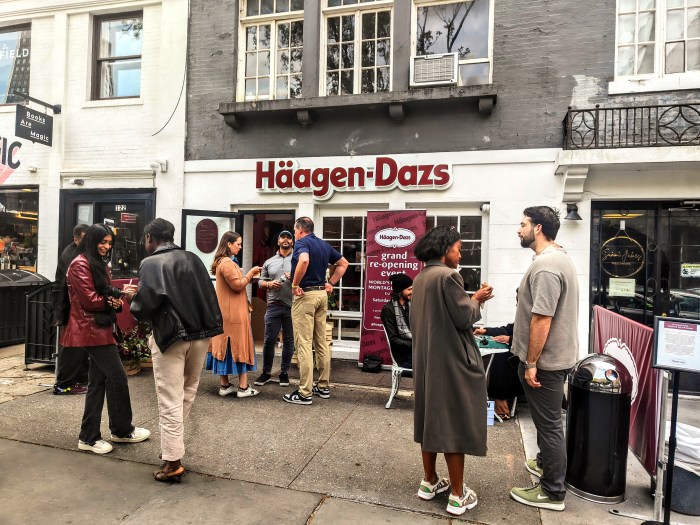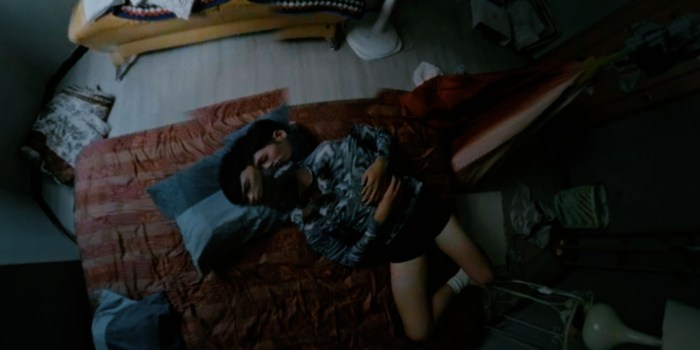The president of local university St. Francis College is amid a massive effort to put his Brooklyn Heights campus on the world map, in order to build a diverse student body and academic relationships across the globe that he says will define the 160-year-old institution’s next century of higher education. But international expansion isn’t the only bold idea that Dr. Miguel Martinez-Saenz proposed for the “small college of big dreams” since he took over as its 19th leader in September 2017. The school’s top educator strives to develop unique relationships with as many of his students as possible — sometimes before they even set foot on the grounds — in order to make the most of their time in the classroom. We recently sat down with Martinez-Saenz — the first person in his family to attend college — to discuss his work on campus, and off, in his term to date:
Natallie Rocha: The three pillars of higher education at St. Francis College are “access, retention, and success.” How have you furthered those pillars in your time as president?
Miguel Martinez-Saenz: One of the things I’ve tried to do from an access point of view, and a retention point of view, is get people to understand that access requires a whole commitment, not just an invitation. It requires [figuratively] holding students’ hands and welcoming them onto the campus, so they feel comfortable. This creates an environment that supports them, even as they are challenged. And I try to encourage this sort of access in the way I interact on campus.
NR: Is there something, or someone, from your time in college that inspires the compassion and understanding you show your students?
MMS: The woman that turned my life around when I was having a difficult time in college was a Florida State University professor, Dr. Maureen Tilley, who died in 2016. Many years after we met, I learned she was also a first-generation college student, and that was one of the reasons that she was so sympathetic. She asked me questions about me, and it was kind of the first time that happened to me in that space. I could have gone in the wrong direction, but she put me on the right path. I was lucky enough to have Maureen commit to and believe in me, so that’s why I do what I do.
NR: How else do you show your commitment to students?
MMS: I go into high schools probably three times a month, in part because I want to communicate what we’re about, but also, to build relationships with prospective students who might eventually move into our spaces. And students see that process of engagement — when I know someone and what he or she needs, I can connect them with donors and other friends of the college for support. But I can’t do that if I don’t know what students need. I joke that students get a little nervous when they see me in the elevator, because they know I’m going to start talking to them. Sometimes I see someone in a bad mood and I have an opportunity to lift him or her up a little bit. You never know what someone is going through.
NR: What is your five year plan for the college?
MMS: We are embarking on a comprehensive internationalization strategy. We have a number of international athletes, and a few study-abroad projects, but no comprehensive relationships. So we’ve established new relationships in Brazil, and in the Caribbean, where we visited a fair in Trinidad and Tobago, and are beginning some partnerships with universities including the University of the West Indies and the University of Trinidad and Tobago. We also just signed a partnership with a group from Norway, and another with a group that has programs in Myanmar, Nepal, and Japan. This is a big push on our end.
NR: Why is international expansion so important right now?
MMS: Today, you have to be globally oriented. New York is arguably the most diverse city on the planet, so getting access to folks living abroad, and also to ethnic communities here, is important for us in creating a diverse learning environment from socioeconomic, religious, and cultural perspectives. The global ethos must be a part of what we do.
NR: I read that you’ve made it a point to teach philosophy and poetry classes to inmates at Sunset Park’s Metropolitan Detention Center, in addition to the education you provide to your students on campus. Why do you prioritize giving lessons to prisoners amid your demanding day job?
MMS: My daughter used to always ask me, “Why do you go inside the prison?” And I’d always respond with my own question: “Why do you think I teach inside the prison?” There are two answers: because there are few others who will go teach inmates philosophy and poetry, but also because I believe I have a responsibility to do so. I can’t provide the opportunity for all, but I can provide it for some, which is why I always say to young people, “I’m not telling you to save the world, I’m telling you to treat some people around you kindly.”
NR: Where do you live in Brooklyn?
MMS: I live in Boerum Hill, blocks from the school, so I get to walk to work and embed myself in the local environment. I like to say that to be educated today, you need to be educated in a diverse learning environment, amid the chaos and cacophony of an urban setting. And what I love about Brooklyn is that you’re being educated all the time. Walk outside and you learn something about the world. I think that’s a powerful thing, especially for my children. I love living in the city and all that it presents, even though there are some challenges.
— Natallie Rocha

















